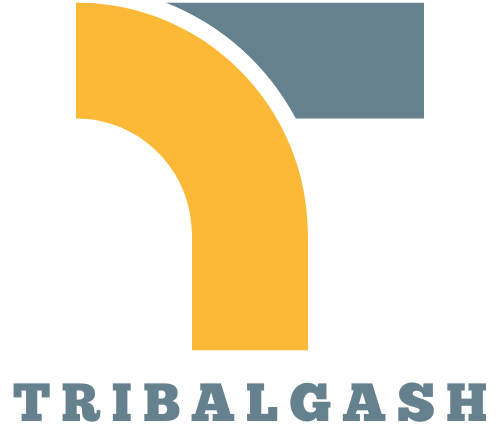Navigating the world of debt can feel overwhelming, especially when juggling multiple loans and credit cards. Many individuals find themselves trapped in a cycle of high-interest payments and mounting financial stress. That’s where debt consolidation comes in, offering a lifeline for those seeking to regain control over their finances.
Debt consolidation helps simplify payments by combining multiple debts into a single loan with a potentially lower interest rate. This approach not only streamlines monthly payments but can also reduce the overall cost of debt. Understanding the benefits and options available for debt consolidation is crucial for anyone looking to improve their financial situation and pave the way toward a debt-free future.
Table of Contents
ToggleUnderstanding Debt Consolidation
Debt consolidation involves combining multiple debts into a single loan, making repayment more manageable. This process often results in lower monthly payments and can reduce overall interest costs.
What Is Debt Consolidation?
Debt consolidation refers to the practice of accumulating various debts, such as credit cards and personal loans, into a single obligation. It simplifies the repayment process by unifying all outstanding balances, providing a clearer financial overview. It often involves securing a new loan, typically at a lower interest rate, to pay off existing debts.
How Does It Work?
Debt consolidation functions through various methods, including personal loans, balance transfer credit cards, and home equity loans. Each option provides a different approach:
- Personal Loans: Borrowers receive a lump sum to pay off multiple debts, repaying the loan through fixed monthly installments.
- Balance Transfer Credit Cards: Borrowers transfer balances from high-interest cards to a single card with a lower rate, often with an introductory 0% APR for a specific period.
- Home Equity Loans: Borrowers leverage home equity to secure funds for debt consolidation, typically resulting in lower interest rates due to the collateral involved.
Each method involves a distinct process but shares a common goal: simplifying and managing debt effectively.
Types of Debt Consolidation

Debt consolidation methods vary, providing different strategies for managing debts. Understanding these types helps individuals choose the best approach for their financial situations.
Secured vs. Unsecured Debt Consolidation
Secured debt consolidation involves backing loans with collateral, such as a home or car, which lowers interest rates but risks losing the asset if payments aren’t met. Common examples include home equity loans and secured personal loans. Unsecured debt consolidation doesn’t require collateral, which reduces the risk of losing assets but often results in higher interest rates. Typical examples include personal loans from financial institutions and balance transfer credit cards.
Debt Management Plans
Debt management plans (DMPs) offer structured repayment strategies through credit counseling agencies. These plans consolidate debts into a single monthly payment, often at a reduced interest rate. Credit counselors negotiate with creditors to develop a tailored plan. DMPs typically last three to five years, providing a clear pathway to overcoming debt, though they may come with fees and affect credit scores during the repayment period.
Benefits of Debt Consolidation Help
Debt consolidation offers several advantages that significantly enhance financial management. By combining multiple debts, individuals experience a more streamlined repayment process and potential savings.
Simplified Payments
Simplified payments result from consolidating debts into a single loan. Individuals manage only one payment each month rather than multiple payments across different accounts. This method reduces the chance of missing payments and incurring late fees. By focusing on one due date, individuals can better track their financial commitments and allocate resources effectively. Additionally, this clarity prevents confusion and enhances budgeting capabilities.
Potential for Lower Interest Rates
Lower interest rates often accompany debt consolidation. Individuals may secure loans with reduced rates compared to existing credit cards or other unsecured debts. This decrease in interest costs can lead to significant savings over time. For example, shifting high-interest credit card debt to a lower-rate consolidation loan decreases the total repayment amount. Moreover, establishing a lower interest rate creates opportunities to pay down the principal balance more effectively, accelerating the journey toward becoming debt-free.
How to Get Debt Consolidation Help
Individuals seeking debt consolidation help must first assess their financial situation. Understanding their total debt, income, expenses, and credit score can guide them in selecting the most effective consolidation method.
Evaluating Your Financial Situation
Evaluating one’s financial situation involves a few key steps:
- Listing Debts: Compile all debts, including credit card balances, loans, and other financial obligations, including corresponding interest rates and minimum payments.
- Analyzing Income: Calculate total monthly income to determine how much can be allocated towards debt payments.
- Calculating Expenses: Document monthly expenses to identify areas for budget adjustments that can free up cash for debt repayment.
- Reviewing Credit Score: Check the credit score to understand eligibility for different debt consolidation options, as this may affect interest rates and repayment terms.
- Setting Goals: Define clear financial goals, such as the desired debt payoff timeframe or target monthly payment.
By thoroughly evaluating these factors, individuals gain a clearer picture of their financial landscape, enabling informed decisions on consolidation options.
Finding the Right Service Provider
Finding a suitable service provider for debt consolidation involves several important actions:
- Researching Options: Investigate various service providers, including credit unions, banks, and online lenders. Verify their legitimacy by checking reviews and ratings.
- Comparing Rates: Analyze interest rates, fees, and terms offered by different providers. Favor those with lower rates and no hidden fees.
- Assessing Customer Support: Evaluate the quality of customer support. Responsive and knowledgeable personnel can significantly enhance the experience.
- Examining Contract Details: Carefully review all terms and conditions in the contract. Pay special attention to repayment terms, penalties for missed payments, and any potential impact on credit scores.
- Consulting Professionals: Consider seeking advice from financial advisors or credit counseling services that specialize in debt consolidation. They can offer tailored guidance based on individual circumstances.
Selecting the right service provider ensures that individuals receive optimal support and favorable terms in their debt consolidation journey.
Common Mistakes to Avoid
Avoiding common mistakes during the debt consolidation process is crucial. Carefully considering these pitfalls can lead to more effective financial management.
Ignoring the Root Causes of Debt
Addressing the root causes of debt remains essential for long-term financial health. Individuals often consolidate without examining why they fell into debt in the first place. They might overlook spending habits, lifestyle choices, or lack of budgeting skills that contribute to financial issues. Ignoring these elements can lead to recurring debt patterns. Individuals should focus on creating a sustainable financial plan to prevent future debt accumulation.
Taking on More Debt After Consolidation
Accumulating more debt after consolidation can undermine the benefits gained. Individuals may feel tempted to use newly available credit lines or loans, which can lead to a cycle of debt. This behavior negates previous efforts to simplify finances. Maintaining discipline and avoiding additional borrowing is vital. Prioritizing budgeting and spending within means enhances the effectiveness of debt consolidation strategies.
Debt consolidation offers a viable path for individuals grappling with multiple debts. By simplifying payments and potentially lowering interest rates, it can alleviate financial stress and pave the way to a more manageable financial future. Understanding the various methods available ensures individuals can choose the best option tailored to their needs.
It’s crucial to approach debt consolidation with a clear strategy. Assessing one’s financial situation and avoiding common pitfalls can enhance the effectiveness of this approach. With the right support and commitment to sound financial habits, individuals can take significant steps toward achieving their goal of becoming debt-free.









